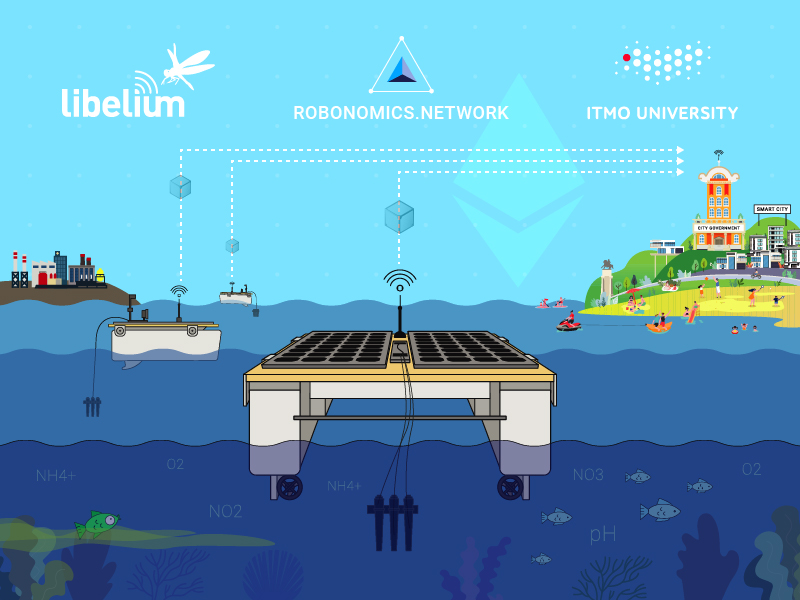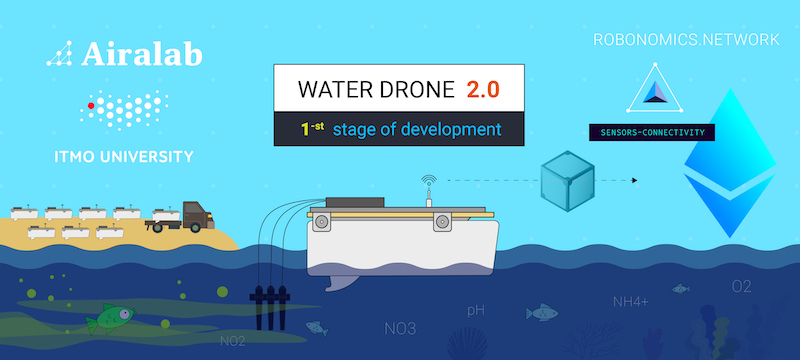Blockchain-based environmental drones ‘can help fight water pollution’, say scientists
According to the World Health Organization, almost a third of the world’s population does not have access to fresh water.
As evidenced by the 2020 UN report on water supply and climate change in the world, water consumption will experience a 20-30 percent increase by 2050, fuelled by the constant population growth and industrial development throughout the world.
Water pollution is a serious threat to both people and water inhabitants, greatly evidenced by the ecological disaster that took place on the coast of Kamchatka in September 2020.
The mass death of marine life is now under investigation by media, authorities and environmental activists, however, none of the versions including water contamination by heptyl decomposition products have yet been officially confirmed.
Basra, Iraq’s main port and the most highly populated city in the country is also nearing its own environmental disaster. The canals that go through one of the hottest cities on the planet are being constantly polluted and at the same time remain the only source of freshwater for the citizens.

The problem with the lack of systematic control of water quality has spread all over the world. Even if such measurements do get carried out, the population still has no way of knowing what the analyses results are, since this information is never available via open sources. Exceptions do exist, but even then, there is no guarantee of data authenticity.
According to the scientists, robots and drones appear to be the best solution for effective control and management of water composition and contamination levels.
This is explained by the fact that the information transmitted directly from the device is usually considered to be reliable since it cannot be changed manually.
This, in turn, is where Ethereum blockchain comes into play with its smart-contracts’ infrastructure. By utilizing its benefits, the team of robotics developers from Saint Petersburg and Tolyatti, Russia has developed an open-source platform called “Robonomics Network” that allows deployment of ecology monitoring services using standalone autonomous devices, otherwise known as drones.
Their platform allows these drones, that have individual digital signatures and operate under a designated protocol, to independently assess the chemical composition of water via built-in sensors. Available parameters are as follows: – pH, oxygen levels, conductivity, temperature and other indicators of various elements.
The project is based on the idea of a decentralized network, where sensor-equipped devices collect data and send it to a distributed ledger for safe storage. In other words, it is a combination of blockchain and collective intelligence of a decentralized self-managed drone infrastructure that acts as a multi-level solution to the problem.
It is a swarm of drones that perform joint monitoring and cross verify each other’s results in a bid to eliminate false alarms and provide authentic and precise data.
Once this data is received, it is the IPFS and the Ethereum blockchain technologies that are used to secure the data. The first one guarantees that the information remains unchanged, whilst the second one stores the information on the sensors that collected the data and the time of it being registered.
Additionally, the sensors combined in a single peer-to-peer network do not have a single point of failure and boast open-source alike access to the data.
As a result, the data received from these devices cannot be altered but can be easily verified by a third party. Moreover, thanks to the electronic signature that each drone has, all subsequent drone movements and its location at any given period of time is securely stored on the Ethereum blockchain.
There are several advantages to using the swarm-like consolidated principle of drones’ management. For example, it allows for a better insight into the general state of the environment, since the measurements are performed by multiple devices across a designated field.
This allows us to create a more accurate pollution map, whilst the drones substitute each other in case of failure and continuously verify the collected data for misreadings.

How many drones is a swarm?
In theory, this number is endless and we believe that the days of such practice are not very far ahead. Most importantly, the blockchain scalability issue that developers used to face, now too, has a solution.
The development of cross-blockchain ecosystems, such as Polkadot with the capitalization of 4 billion dollars, opens up many diverse opportunities for the deployment of such services around the world.
Whilst Polkadot network is still in development, a beta version of the Robonomics parachain is already available online and delivers deep functionality to IoT devices on the platform.
According to the developers, the network will be able to host millions of IoT device counterparts within the next two years and provide the level of information security that today’s cloud platforms are simply not capable of.
This will unfold previously unavailable tools for eco monitoring of the environment, as well as logistics, manufacturing processes, and other areas that make up the future of smart cities.

